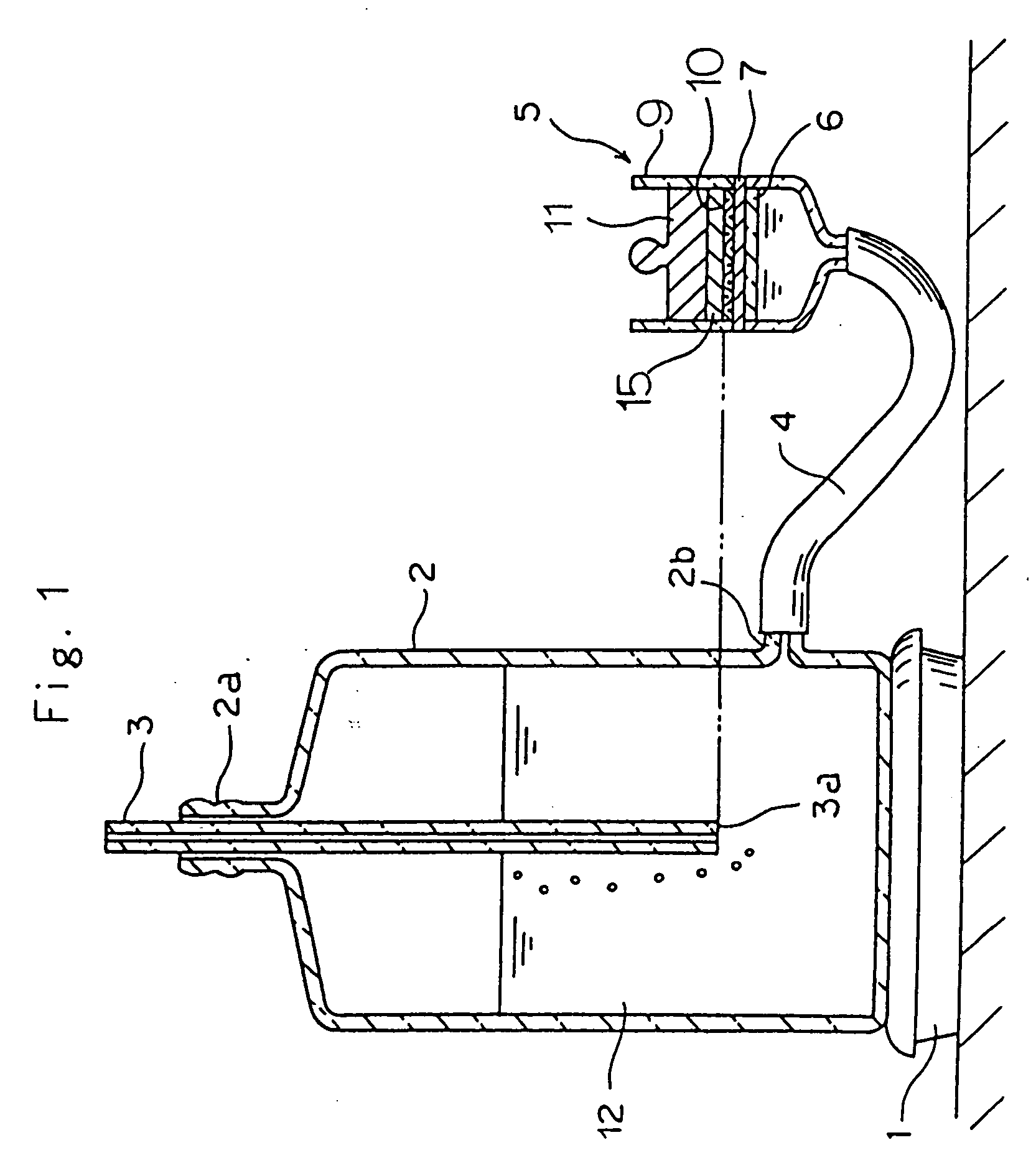Water-absorbing agent and its production process and use
a technology of water-absorbing agent and production process, applied in the field of water-absorbing agent, can solve the problems of deterioration of absorption speed, liquid-, permeability, gel strength, etc., and achieve the effect of stable high-absorption amount and excellent absorption properties
- Summary
- Abstract
- Description
- Claims
- Application Information
AI Technical Summary
Problems solved by technology
Method used
Image
Examples
example 1
[0310] A reaction solution was prepared by dissolving 9.25 g of polyethylene glycol diacrylate (average molar number of added ethylene oxide: 8) into 5,500 g of an aqueous solution of sodium acrylate with a neutralization ratio of 65 mol % (monomer concentration: 30 wt %). Next, this solution was degassed under a nitrogen gas atmosphere for 30 minutes, and then supplied into a reaction vessel as prepared by capping a stainless-steel-made double-arm type kneader of a capacity of 10 liters having two sigma type vanes and a jacket. While maintaining the reaction solution at 30° C., the atmosphere inside the system was replaced with a nitrogen gas. Next, while the reaction solution was stirred, 1.91 g of 2,2′-azobis(2-amidinopropane) dihydrochloride, 0.96 g of sodium persulfate, and 0.10 g of L-ascorbic acid were added, so that a polymerization reaction got started about 1 minute after. The polymerization was carried out at 30˜80° C., and the resultant hydrogel polymer was got out 60 mi...
example 2
[0313] A reaction solution was prepared by charging 720 g of acrylic acid, 3.08 g of N,N′-methylenebisacrylamide as the internal-crosslinking agent, and 2,718 g of deionized water as the solvent into a reaction vessel as prepared by capping a stainless-steel-made double-arm type kneader of a capacity of 10 liters having two sigma type vanes and a jacket. Next, while maintaining the temperature of this reaction solution at 15° C., the atmosphere inside the system was replaced with a nitrogen gas. Then, while the reaction solution was stirred, 21.6 g of a 10 wt % aqueous 2,2′-azobis(2-amidinopropane) dihydrochloride solution, 18.0 g of a 1 wt % aqueous L-ascorbic acid solution, 20.6 g of a 3.5-% aqueous hydrogen peroxide solution were added to initiate a polymerization reaction. The stirring was stopped at the same time as the initiation of the polymerization reaction. Then, the polymerization reaction was carried out while the temperature of the jacket was fitly elevated with the tem...
example 3
[0318] An aqueous monomer solution was prepared by mixing 67.0 weight parts of a 37 wt % aqueous sodium acrylate solution, 10.2 weight parts of acrylic acid, 0.097 weight parts of polyethylene glycol diacrylate (average number of polyethylene oxide units: 8), and 22.0 weight parts of water together. Nitrogen was blown into the above aqueous monomer solution in a vat, thus reducing the concentration of dissolved oxygen in the solution to 0.1 ppm or below. Then, the temperature of the solution was adjusted to 18° C. under nitrogen atmosphere. Next, 0.16 weight parts of a 5 wt % aqueous sodium persulfate solution, 0.16 weight parts of a 5 wt % aqueous 2,2′-azobis (2-amidinopropane) hydrochloride solution, 0.15 weight parts of a 0.5 wt % aqueous L-ascorbic acid solution, and 0.17 weight parts of a 0.35 wt % aqueous hydrogen peroxide solution were dropped in sequence under stirring.
[0319] Immediately after the dropping of hydrogen peroxide, a polymerization reaction got started, and aft...
PUM
 Login to View More
Login to View More Abstract
Description
Claims
Application Information
 Login to View More
Login to View More - R&D
- Intellectual Property
- Life Sciences
- Materials
- Tech Scout
- Unparalleled Data Quality
- Higher Quality Content
- 60% Fewer Hallucinations
Browse by: Latest US Patents, China's latest patents, Technical Efficacy Thesaurus, Application Domain, Technology Topic, Popular Technical Reports.
© 2025 PatSnap. All rights reserved.Legal|Privacy policy|Modern Slavery Act Transparency Statement|Sitemap|About US| Contact US: help@patsnap.com



